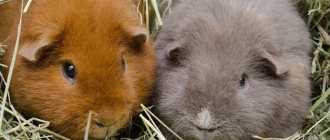The life activity of hens and roosters is different, it all depends on many factors. Birds are bred both in industrial farming and at home for their own needs. On poultry farms, chickens are not kept for more than 2 months, but at home the owner can raise them for up to 3 or even 5 years. There are also record-breaking centenarians in our world who surprise all people. Below are the breeds of chickens and their lifespan.
How many years does a chicken live?
In the vast majority of cases, the period of optimal egg production lasts two years.
The main purpose of egg breeds is to provide humans with eggs. The bird in the indicated direction is kept until it copes with the task assigned to it.
In the vast majority of cases, the period of optimal egg production lasts two years. Productivity peaks in the first year and then gradually declines. Based on this, laying hens in poultry farms, the main focus of which is the production of eggs, usually live for about a year, in farmsteads - twice as long.
The situation is different with poultry raised for meat. The most rapid growth of broiler breeds is observed in the first months of life. At poultry farms, broilers are slaughtered at one and a half months of age, weighing 1.5-2 kg, while farmers slaughter them at three to four months, weighing about 4 kg.
Further keeping of meat breed birds is not economically feasible.
Chickens of meat and egg breeds are slaughtered at the age of one and a half to two years. Otherwise, the meat becomes too tough.
Chickens of meat and egg breeds are slaughtered at the age of one and a half to two years
Decorative chickens of small size, with beautiful plumage and bred to decorate the yard, usually die of old age at the age of 5-7 years.
Life cycle of chickens
The life cycle of chickens goes through several stages.
- The rooster begins to show interest in females for mating at 5-6 months. Mating is necessary to fertilize the eggs. Hens incubate their offspring for 21 days.
- The appearance of chicks. The first 7 days are very important; it is during this period that the mortality rate among chickens is highest. Therefore, special attention should be paid to the conditions of detention (temperature, absence of drafts, lighting) and proper nutrition. The hen teaches the chicks to find food and protects them from enemies.
- 2-4 weeks. To make the chickens freer and able to adapt to the climate, they are transferred to another room, in which the temperature is slightly lower - 5 degrees. During this period, the young animals actively gain weight.
- At 4-5 months. chickens of egg breeds become able to lay eggs. Before 12 months, they will begin to actively lay eggs. Then egg production will decline.
- After 2 years of life, keeping a chicken becomes expensive. The bird is going to be slaughtered.
What affects life expectancy?
The life expectancy of backyard chickens and their productivity are influenced by the following factors:
- nutrition;
- conditions of detention and care.
Diet
The diet of chickens should be balanced. Only in this case will meat breeds quickly gain weight, and egg breeds will lay eggs. The food offered must be fresh and contain all the required minerals and vitamins.
Be sure to read:
Shelf life of chicken eggs and proper storage at home
The basis of the diet should be:
- grain crops (oats, wheat);
- legumes (soybeans, peas);
- products remaining during the processing of agricultural crops (cake);
- succulent food (cabbage, greens).
In addition, the food should include:
- meat and bone meal;
- meat, fish waste;
- milk products;
- limestone, which promotes the digestion of food.
Chickens are fed three to four times a day. The main portion of food is poured in the morning and makes up the daily part of the diet, the last portion is in the evening and consists entirely of grain.
It is not advisable to overfeed chickens
Daily portions are fed at regular intervals and are a wet mash. One bird receives 137-140 grams of feed in summer and 116-120 grams in winter.
It is undesirable to overfeed chickens - overfeeding has a negative impact on mobility, productivity, and general health.
Conditions of detention
The room intended for chickens to live must be clean and warm (the air temperature should not fall below +10 degrees). Daylight hours should be 14 hours, humidity should be 40-70%.
The chicken coop should have:
- artificial lighting;
- walking area;
- drinkers with a volume of 5-6 liters (the number of water containers should be sufficient);
- feeders with an area of 10-15 cm per individual, placed above the floor (when placing feeders below, chickens will rake up the food);
- heaters;
- ventilation;
- ash baths necessary to get rid of parasites.
Advice! In the summer, the water should be changed as often as possible, as it quickly goes rancid.
Ventilation is arranged in the following ways:
- installation of windows (their location is selected in such a way that there is no draft);
- making ventilation holes in the roof (ventilation arranged in this way is optimal for the winter period);
- installation of a ventilation system (most often found in poultry farms).
The walking area (usually an enclosure made of chain-link mesh) is located on the south side and equipped with containers for drinking, food, and fine gravel.
For your information . Wet mashes exposed in the open air quickly deteriorate - the feed should be removed immediately after the chickens are fed.
In small farms, free range is allowed - chickens leave the chicken coop at will and also freely come back. This option allows you to reduce the amount of food purchased, but the birds can dig up the garden.
Be sure to read:
How do hens and roosters reproduce, how many roosters should there be in the chicken coop?
The importance of detention conditions
From lighting to walking
Daylight hours are important for birds. The number of hours of sunshine must be at least 14 for the chicken to feel good. If additional lighting is not provided during the cold season, the chickens’ body quickly breaks down. They get sick and die quickly.
The ideal temperature in the poultry house is 20-25 degrees. Ventilation is necessary to prevent the occurrence of fungus and the proliferation of microbes.
Full-fledged walking also has a beneficial effect on how many years a domestic chicken lives. The location of the chicken coop also matters. In a noisy environment, chickens develop chronic stress, which causes health problems.
Other nuances
Incorrect sex ratio leads to shortening of the chicken eyelid. If there are too many males, they fight among themselves and chase the females. As a result, both suffer. Stress, exhaustion, and trauma occur.
Neglecting cleaning and disinfection leads to dire consequences. Litter, dirty bedding, spilled water and scattered food are a haven for bacteria and parasites. Namely, they usually cause the premature death of chickens.
And, of course, how many years a chicken lives depends on whether it encounters a predator. Weasels, martens, ferrets, foxes, domestic cats and dogs are capable of significantly thinning out the population. Or even destroy it.
How long do roosters live?
The natural life expectancy of laying hens is 8-10 years, meat chickens - 6-7 years.
The only purpose of a rooster, regardless of its breed, is to fertilize chickens. And, naturally, the rooster is kept on the farm as long as it copes with the specified task (as a rule, this period of time is about four years).
If the rooster does not have breeding value and is not involved in fertilization, then it is slaughtered upon reaching its maximum body weight.
About wild chickens
All chicken breeds as we know them are descended from wild counterparts. Today they still live on Earth in Southeast Asia. There are 4 known types: banker, Ceylon, green, gray. All of them are amenable to domestication. The most popular on farms are bank roosters.
The natural environment for these birds is jungle and forests. In the absence of threats, wild chickens can live up to 10-15 years. However, this is rare.
Birds are threatened by hunters. Reduction of habitat. And a shortage of food due to cutting down trees and draining water bodies. Predators also contribute, for which chicken is easy prey.
Thus, how many years chickens live in the wild depends on their genetics, human factors and luck.
How long can a headless chicken survive?
Paradoxically, a headless chicken lives for several minutes after slaughter. This is explained by the fact that, although during evolution the brain took over control of the body of birds (animals), the centers of the spinal cord responsible for reflex movements have not disappeared anywhere.
Be sure to read:
Composition of a chicken egg, table of categories according to GOST, which they are divided into and how they differ, how much it weighs
So, a person withdraws his hand from a hot object, acting reflexively. However, he will not be able to sit down or stand up without signals from the brain.
A chicken without a head, but with an intact spinal cord, also moves reflexively. However, life in a headless bird body is maintained only as long as blood circulates through the arteries and veins (usually this time is several minutes).
For your information. While in its death throes, the chicken experiences severe pain; therefore, experiments with decapitation of poultry in one’s own backyard are not only unethical, but also have a negative impact on the organoleptic characteristics of the meat.
Dangerous diseases
If you decide to get chickens, you cannot skimp on veterinary measures. All birds must be vaccinated on time. And at the slightest suspicion of illness in at least one chicken, you should call a specialist.
Whether a chicken lives well at home can be seen by its behavior. And signs of disease are always present. This is weakness, lethargy, loss of appetite, disheveled feathers, problems with stool.
Most often, birds suffer from salmonellosis, infectious bronchitis, bird flu, and smallpox. If you want your pets to live as long as possible, read the article “Symptoms and Treatment of Common Chicken Diseases.”
Time indicator
Chickens are not long-lived. In the wild they have many natural enemies. In addition, it is not always possible to find a sufficient amount of food, and weather conditions (frost) have an impact on the lifespan of the bird. As for the natural period, it reaches 15 years. However, in a private household no one will keep a laying hen for that long. Life expectancy is influenced by breed indicator. Meat birds rarely live more than 90 days because... By this age they gain the required weight and go under the knife. Egg-bearing representatives are kept a little longer while they are fertile.
Intelligence
Table of contents
Intellectual abilities of chickens:
- The chicken's brain is simpler than that of other representatives of the class of mammals, but this does not prevent it from remembering more than a hundred faces. She recognizes her owner, knows the representatives of her large family. The absence of a bird in the chicken coop for several days does not prevent it from returning back without any problems.
- Chickens navigate in time. They know the cycle of day and night, lead an active lifestyle during the day, and sleep at night. The bird knows the time of meal and waits for the owner in a certain place at a certain time.
- The bird knows its chicken coop; if it is free-range, it will only come to its home. However, the chicken navigates by sunlight; in cloudy weather, it can get lost.
- There is a social hierarchy in the chicken coop. The bird knows who is in charge in the house, where its place is to roost. Chickens may fight each other for space in the coop, but chickens are generally peace-loving birds.
Longevity records
The Guinness Book of Records records a case where a chicken lived for 14 years. But, as we know, this is not the limit. There are many cases where birds lived longer in private homes. But they are not documented. Thus, it was reported about chickens that crossed the threshold of 25 years.
A chicken from China is known to have lived for 22 years. If we translate them into human age, it will be about 400 years. Pensioner Yang Shaofu told reporters that when his daughter-in-law bought chickens, this chicken did not stand out in any way. But then, at 2 months, she laid her first egg.
There was also a case in Ukraine - a chicken lived for 12 years. Its owner said that there was no special care for the bird. And it's all about genetics, apparently.
Some chicken breeds are more likely to live longer than others. So, of the most popular, the most durable are plymouth rocks. They can live on the farm for 10 years. Cochins live up to 4 years on average. Loman browns and Russian chickens - up to 3-3.5 years. Highsex live for about 3 years. And brahmas are about 2-4 years old.
Long-lived record holders
A chicken from Ukraine of the dwarf breed Gannusya, who lived to be eighteen years old, became a record holder. But this was only until 2010, when a new bird appeared in China, living to be twenty-two years old. If you convert the years to chicken age, she was four hundred years old. During her life she laid five thousand eggs.
Experiments by Japanese scientists have shown that domestic chickens are long-lived. The birds were deprived of food for a month - they were given only water. Each individual survived, and later many of them lived to be eighteen years old.
Conditions that will make chickens lay more eggs and grow faster
- Daily diet. Chickens should eat: grain, soybeans, peas, fresh grass, mixed feed, mash.
- Free space. So that the chickens do not have any restrictions on their movement, the chicken coop and the yard where they roam should be large and spacious. In warm weather, chickens walk in the yard all the time, where they eat various insects, grass, worms, all this contributes to rapid weight gain and good egg production.
- The chicken coop should be dry, clean and warm, the temperature should be about twenty degrees. The chicken coop should have feeders and drinkers with clean water, they are located so that the chickens can approach them at any time. In addition, nests and perches must be made so that there is enough for everyone. The nests are located in a quiet place where the sun's rays do not reach; one nest is enough for three chickens.
Economic direction
Farmers calculate the maintenance of animals based on the minimum amount of costs, but at the same time the profit should be received as much as possible. Egg breeds of chickens show the highest productivity for 2 years, after which the bird’s further life no longer makes sense. From a practical point of view, even these terms do not always correspond to reality; not every farm can be suitable for the conditions in which birds live. For example, many began to use bacterial bedding for chicken coops, which makes the birds’ living conditions more comfortable.
Most often, chickens are kept for 365 days; unbalanced feeding and harsh living conditions lead to a decrease in egg production. We will talk about proper diet a little further. Homestead farming allows birds to live a little longer. The feeding may not be very plentiful, but in the walking yard the chickens will always be able to find additional food in the form of seeds or insects. In addition, the birds are exploited in a more gentle manner. On average they will live for about three years. Further existence is determined by the quality of the chicken and the owner. Meat products from such birds are still considered dietary and light. But if a laying hen has managed to prove herself as an excellent hen, then it is preferable to leave her to hatch eggs, even if she does not lay eggs herself.
Noisy creatures
Chickens, and especially young chickens, are very noisy poultry. They love to run, jump, chatter, and sunbathe when given the opportunity. There are a huge number of reasons why a real commotion can arise in a chicken coop “from scratch” - starting with the appearance of a stranger in the house, undivided feed and ending with the solemn announcement “I’m finally laid!” Meanwhile, millions and millions of birds on modern poultry farms spend their entire lives in cramped poultry houses, the area of which is barely larger than a sheet of A4 paper.
Chickens, and especially young chickens, are very noisy poultry.
Peculiarities
Laying hens have a rather narrow agricultural specialization and differ markedly from meat and universal breeds. Among the external signs, one can note a not too dense physique and small size: the average weight of chickens is 1.8 kg, roosters - no more than 2.7 kg. In addition, egg-bearing breeds are quicker than meat and all-purpose breeds, and reach sexual maturity by 140 days, and some species are even capable of producing eggs as early as 125-130 days. It should also be noted that egg chickens fly well, which is ensured by their low weight, large wingspan and elongated tail feathers. Almost all laying hens are characterized by light bones, an elongated body, a small head and high legs, which makes them noticeably different from the heavy and clumsy broilers.
They have a well-developed comb, colored in bright red tones and with many teeth. Its color is a kind of indicator of the health and productivity of the bird, and a partial loss of brightness often indicates problems. Another distinctive feature of egg species is the possibility of cage keeping, which in no way affects the overall productivity of the livestock. However, for the well-being and high egg production of the wards, the places where they are kept must be well equipped and convenient for the birds.
As for the character of laying hens, it also differs markedly from the character of meat and all-purpose breeds. Such birds are characterized by high physical activity, which sometimes turns into hecticness and is caused by an accelerated metabolism. Among the characteristics of representatives of egg breeds, one can note low parental responsibility, which is why they are extremely rarely suitable as hens. For these purposes, breeders use an incubator or place eggs under more diligent and responsible chickens of other breeds. Another feature of laying hens is their excellent appetite. This is due to the fact that the bird produces a large number of eggs, which is why its body constantly needs to replenish nutrients.
Origin and diversity
The most numerous of the domesticated birds came from the Bank junglefowl, which lived in Asia. The current chicken family is so large and diverse that it is hardly possible to count the exact number of breeds and varieties. According to the standard of European poultry breeders, there are 180 breeds, but biologists claim that there are many more.
Serama
Birds vary greatly in color and size. The color palette of chicken plumage contains many colors and shades - from snow-white to coal-black. The size is also surprising. The smallest chicken - Serama - being fully grown, weighs only 300-500 g, and the largest are representatives of the Brahma and Master Gray breed, whose weight reaches 7 kg!
Master Gray











